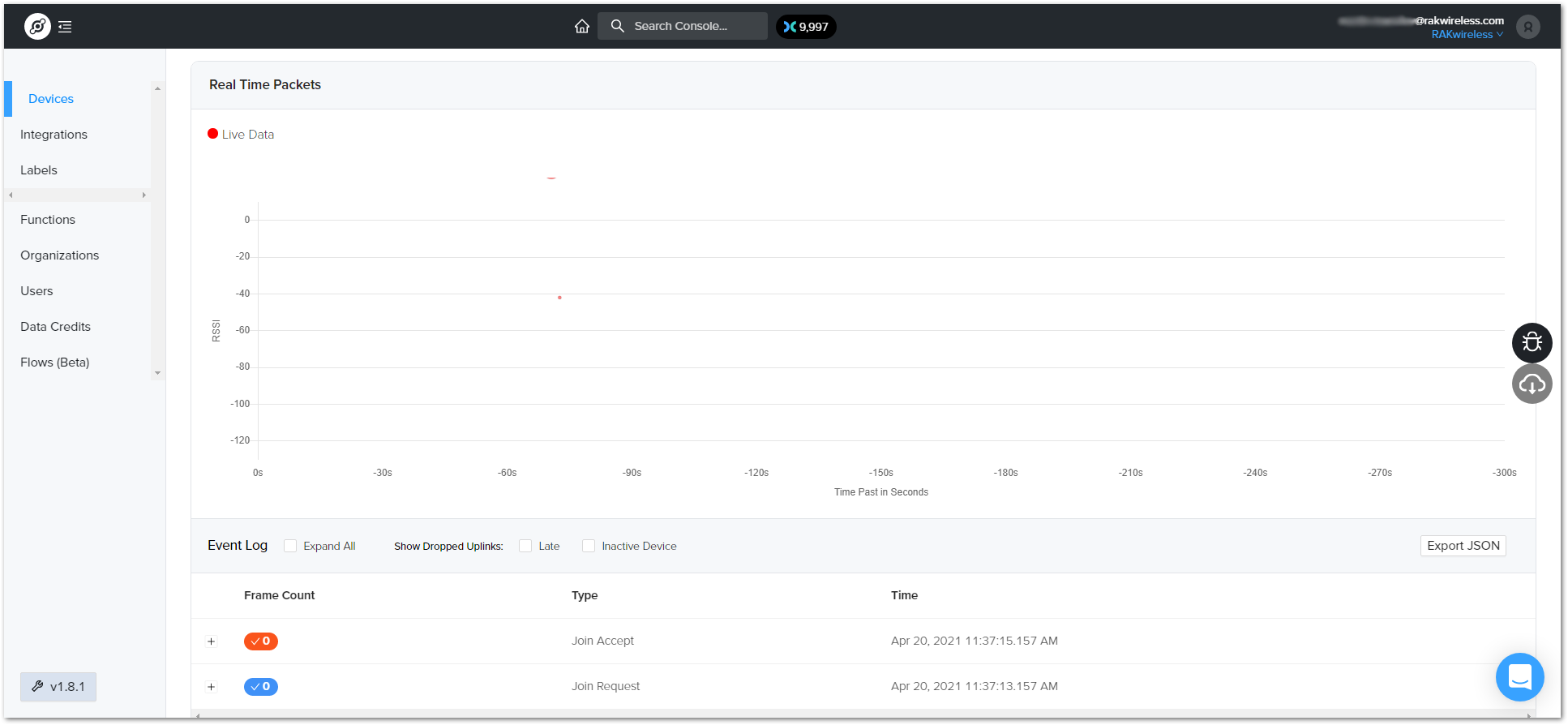RAK7200 WisNode Track Lite
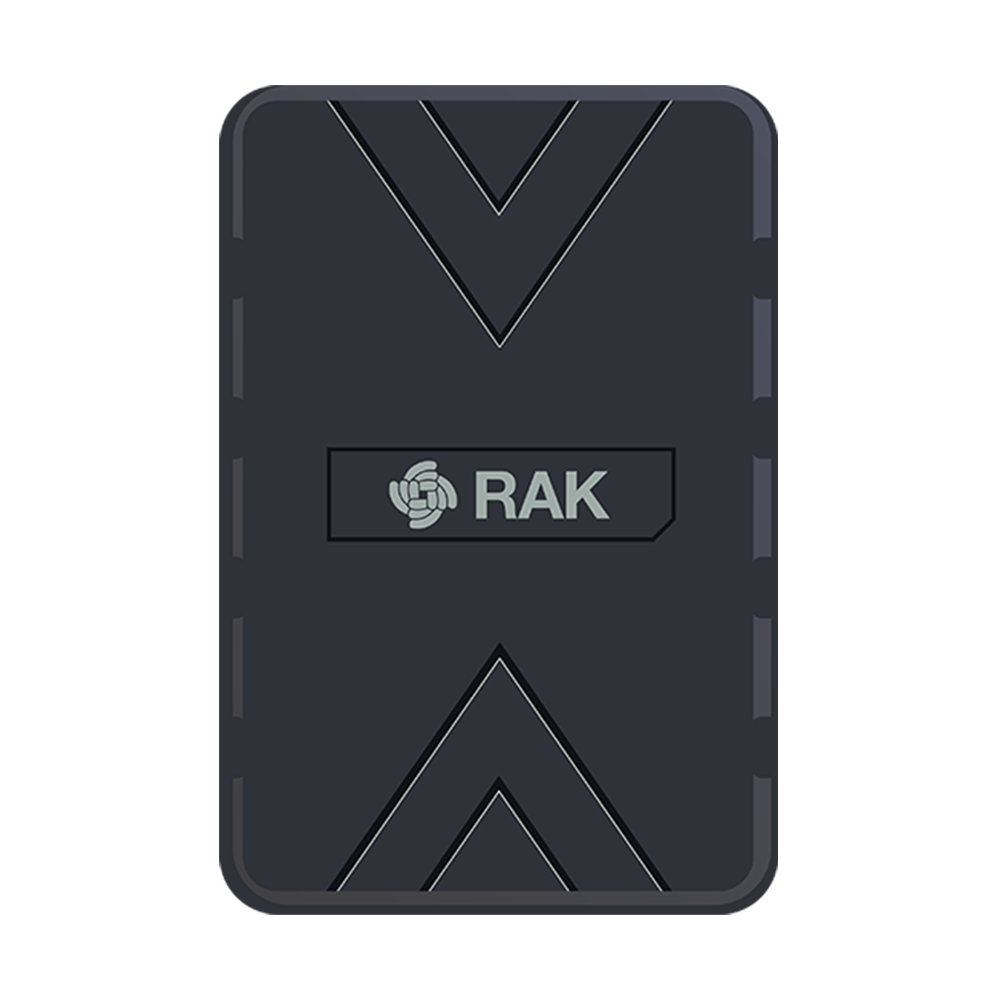
Overview
The RAK7200 WisNode Track Lite is an LPWAN Tracker device with a 3.7V rechargeable Li-Ion battery and a GPS modem. It is built around low-power LPWAN Module, which integrates the ultra-low-power STM32L073 micro-controller, the SX1276 LoRa long-range modem, and the CXD5603GF GPS modem.
This device can be used as a quick prototyping tool for LoRaWAN application development. It is suited for IoT applications such as asset tracking, smart vehicle management, and location-based services.
Product Features
- Supports sleep mode and low-power consumption.
- Built-in LIS3DH - digital motion sensor, which has dynamic user selectable full scales of ±2g/±4g/±8g/±18g and is capable of measuring accelerations with output data rates from 1Hz to 5kHz.
- Barometer: Built-in LPS22HB - digital nano pressure sensor.
- Built-in 9-Axis Sensor, which includes a triple-axis gyroscope, a triple-axis accelerometer, and a triple-axis magnetometer.
- LoRaWAN 1.0.2 Standard support - ABP or OTAA mode.
- LoRa and GPS antenna are integrated inside the casing.
- Micro USB for configuration and charging of the battery.
- Supports global license-free frequency band: IN865, EU868, US915, AU915, KR920, and AS923.
Useful Resources
Connecting to Helium (The People's Network)
tip
Before going through each and every step in connecting the RAK7200 to Helium, it is recommended to check first our Quick Start Guide.
Helium has quickly become the most widespread LPWAN communal network with more than 27,000 devices deployed globally. All the RAKwireless node products are compatible with it and the process of adding a device to the network is intuitive and straightforward.
This section will focus on giving a brief guide on how to connect the RAK7200 to the network console, assuming that there is a Helium Hotspot within range.
Log in or create your account here.

Once registered/logged in, you will end up at the home page, where you can see your function tree on the left and DC balance at the top, as well as a number of useful links.
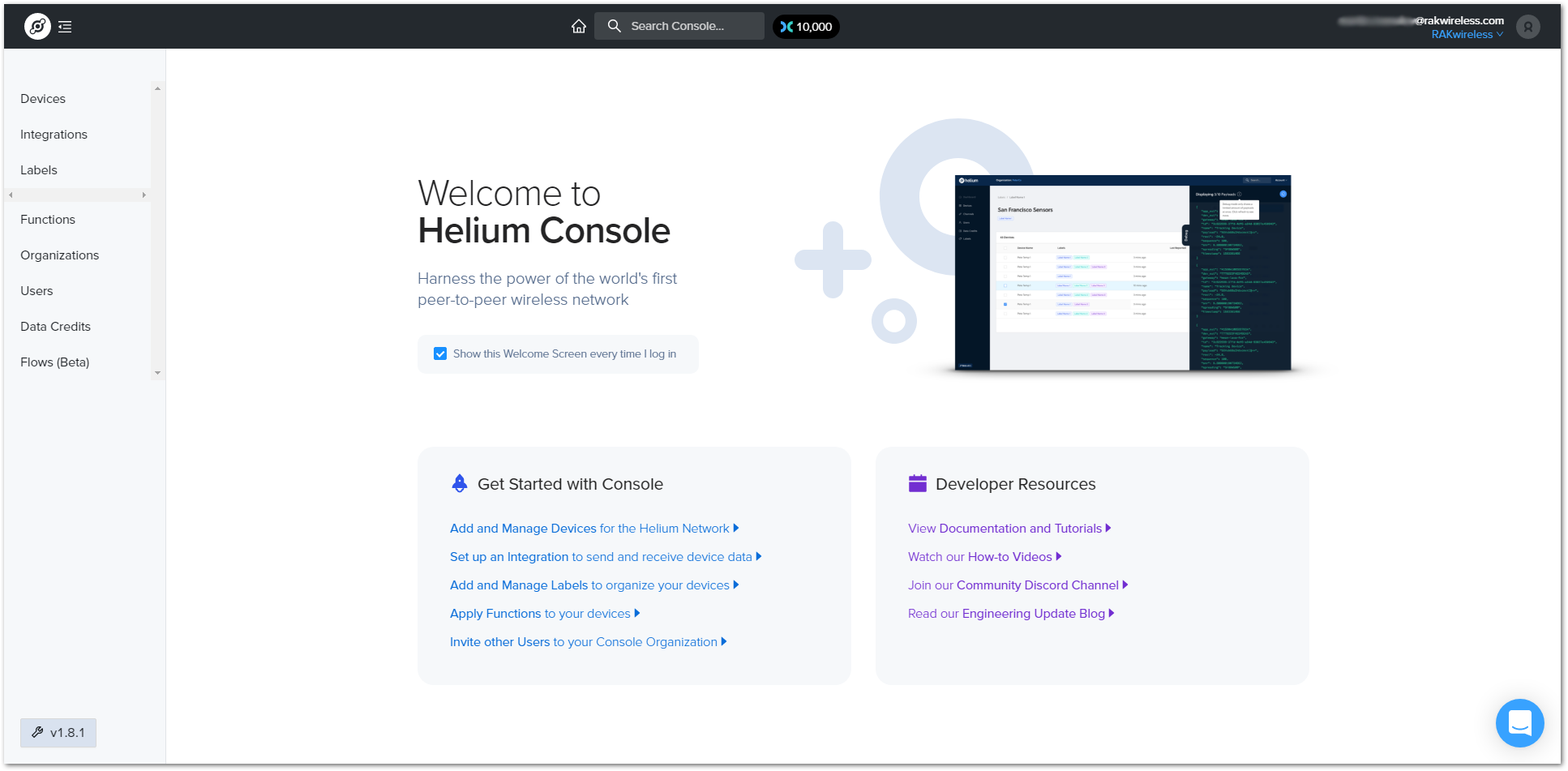
Go to the Devices section in the function tree. There will be no registered devices if this is your first time doing this. To add a device, click the + Add Device button and get started.
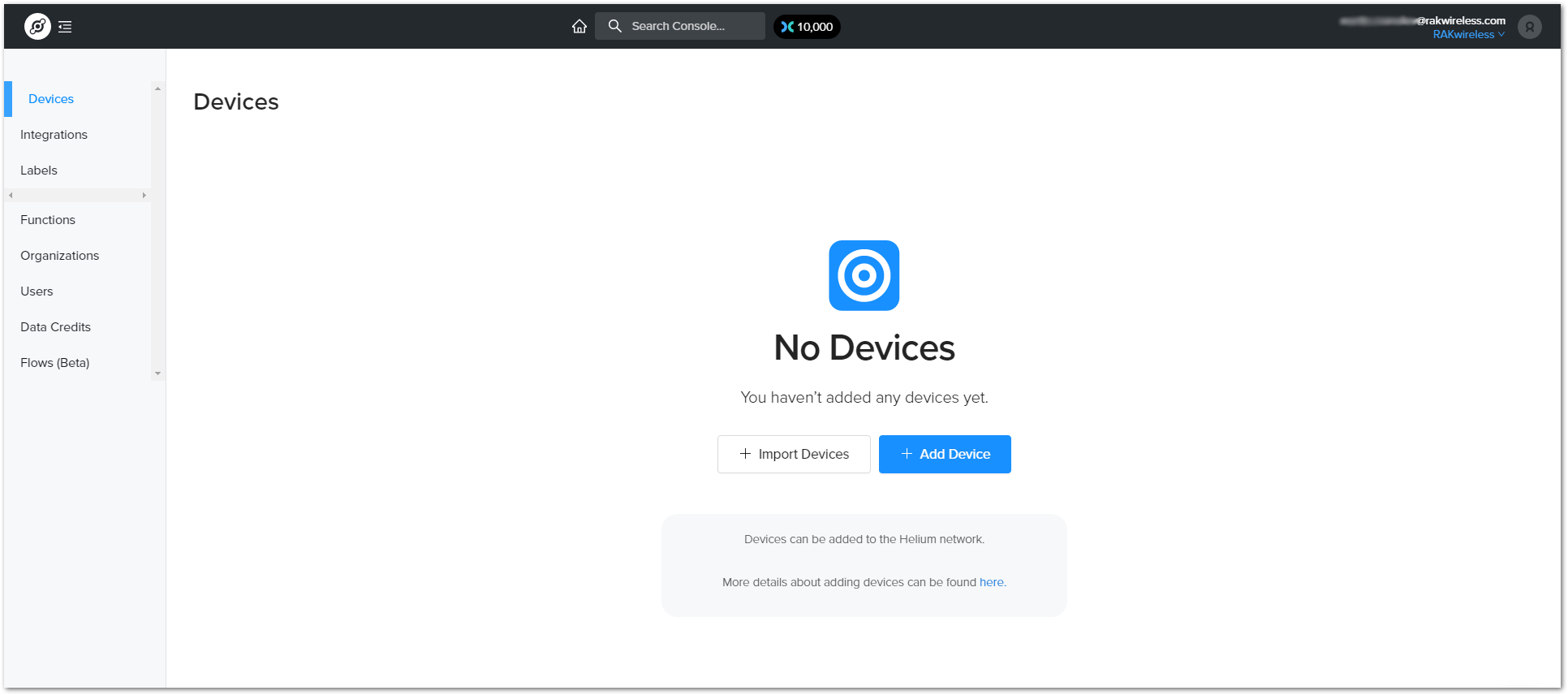
A window will pop up with a set of fields containing the device parameters required for its registration.

Fill in a name of your choosing. The Dev EUI, App EUI, and App Key will have random values generated for you by default. Press the eye icon to reveal the values. You can manually replace them with values of your own. For this tutorial, default values are used. Press the Submit button, and you are done.

Now, your RAK7200 is registered and is awaiting activation. For this to happen, import the Dev EUI, App EUI, and App Key in the RAK7200 using the RAK Serial Port Tool.
Open the tool, select the desired port (default baud rate) and open it. Then start importing your settings.
Configure your LoRa band and activation mode. This tutorial will be using the EU868 band and OTAA (the only option available for now with Helium) with device class A (the default one does not need configuring).
- Regional band and activation mode setting
at+set_config=lora:join_mode:0
at+set_config=lora:region:EU868
- Enter the Dev UI
Use the command below by replacing the XXXX with your Device EUI from the Helium console:
at+set_config=lora:dev_eui:XXXX
- Enter the App EUI
The same as with the Device EUI, replace the XXXX with your value:
at+set_config=lora:app_eui:XXXX
- Enter App Key
Finally, fill in the App key with the command:
at+set_config=lora:app_key:XXXX
- Join Network
Finish executing the join command for the node to initiate the join procedure. Once the procedure is initiated and completed, you will have a notification in the serial console.
at+join
Your output should resemble the one in figure below:
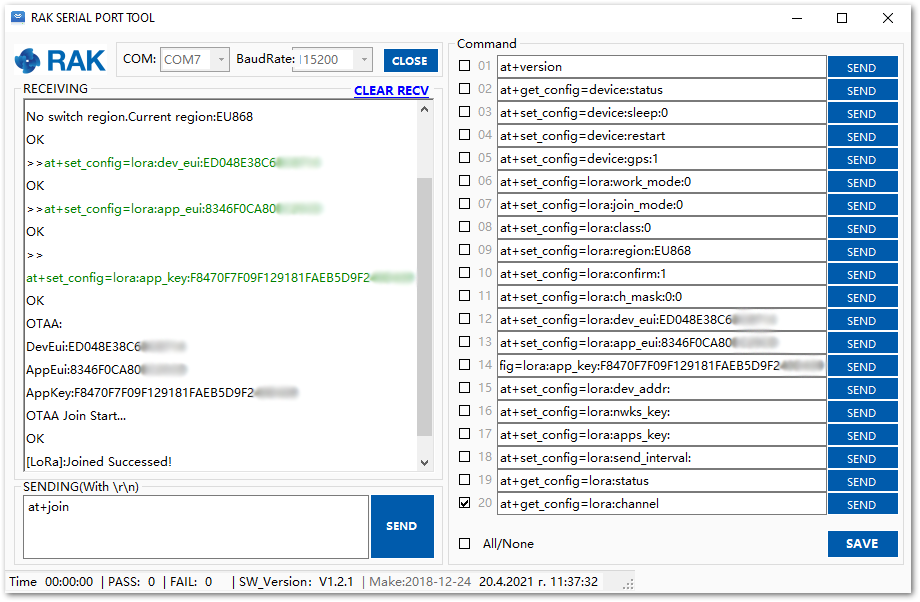
If you take a look at the Helium console, you will also see the join request packets both in the graph and event log. Your node is now a part of the Helium Network.
